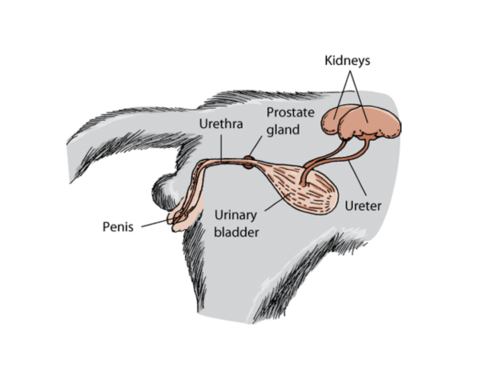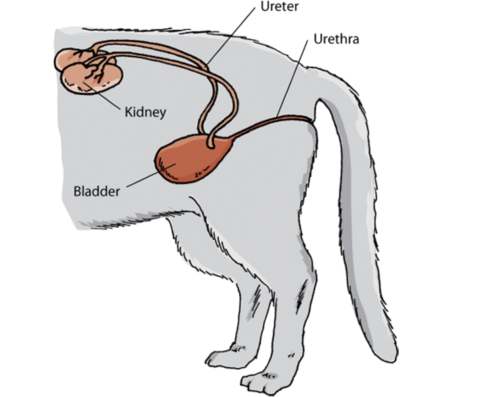Chronic Kidney Disease (CKD) is a disease common in both cats and people. If your veterinarian has determined that kidney damage has been ongoing for more than 3 months, it is considered chronic and will require close monitoring and intervention.
These are a few of the many terms used to describe CKD in cats including the following:
- Chronic Renal/Kidney Disease (CKD)
- Chronic Renal/Kidney Failure
- Chronic Renal/Kidney Insufficiency
- Renal/Kidney Disease
If the loss of normal function happens quickly, it’s referred to as acute kidney disease. Acute kidney disease is caused by sudden events that injure the kidneys, for example, a cat ingesting toxic antifreeze from a car, a blood clot forming in the kidney, a bacterial infection in the kidney or mineralized stones blocking urination. Acute kidney disease can strike at any age. Fortunately, if it’s diagnosed and treated promptly, the damage to the kidneys can often be reversed.
Chronic kidney disease is a set of signs and symptoms that are caused by progressive degeneration of functional kidney tissue. Although we do not know the exact cause of CKD, the disease progression can be slowed down with proper care and your cat can live a happy and healthy life.
How do normal kidneys work?
Kidneys play a really important role in our bodies as well as the bodies of our cats. Kidneys rid the body of toxins that otherwise would accumulate and cause disease.


Healthy kidneys are walnut-sized organs located in your cat’s abdomen just below the spine. Their main role is to filter excess fluid and toxic waste products from the body into the urine. Inside the normal kidney, there are thousands of filtration units known as nephrons. As the heart pumps blood into the kidneys, fluid, waste products and salts, known as electrolytes, are carried to the kidneys from other areas of the body. Inside the nephrons, these are filtered from the blood. This filtered fluid then moves through a system of tubules. In the tubules, some fluid and electrolytes are absorbed back into the blood to maintain normal levels in the body. Meanwhile, excess fluids, electrolytes and harmful toxic waste products are collected into the urine for excretion.





